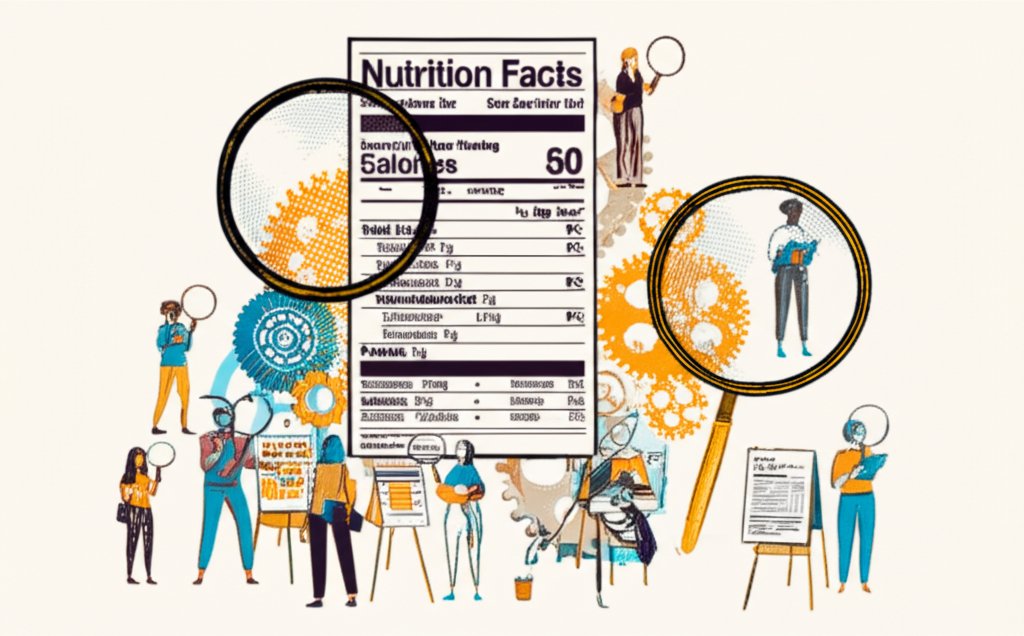Ever wonder exactly what you’re getting when you tuck into a plate of spaghetti and meatballs? It’s a comfort food classic, but understanding the nutrition facts for spaghetti and meatballs can make a real difference in your balanced eating. From hidden sodium to surprising carb counts, knowing the nutritional landscape helps you enjoy this dish smarter.
At a glance:
- Understand the typical calorie, fat, carb, and protein content of spaghetti and meatballs.
- Identify hidden sources of sodium and sugar.
- Learn how portion size dramatically impacts the nutritional profile.
- Discover simple swaps to make your meal healthier without sacrificing taste.
- Compare homemade versions with restaurant servings to make informed choices.
Decoding the Nutrition Label: Key Components
The nutrition facts for spaghetti and meatballs can vary significantly based on the recipe, ingredients, and portion size. But let’s break down the common components:
- Calories: A standard serving (about 1 cup of spaghetti with 3-4 medium meatballs and sauce) typically ranges from 400 to 600 calories.
- Fat: This can range from 15 to 30 grams, depending on the type of meat used (lean ground beef vs. pork) and the amount of oil in the sauce. Saturated fat content is particularly important to monitor.
- Carbohydrates: Expect around 50 to 70 grams of carbs, mainly from the spaghetti and any added sugars in the sauce.
- Protein: You’ll get a decent protein boost, usually between 20 and 30 grams, primarily from the meatballs.
- Sodium: This is where things can get tricky. Restaurant versions and jarred sauces are often loaded with sodium. A single serving can easily exceed 1000mg, which is almost half the recommended daily intake.
Example: A restaurant serving might list 550 calories, 25g fat, 65g carbs, 25g protein, and a whopping 1200mg of sodium.
Portion Control: The Sneaky Variable
Even if you’re choosing relatively healthy ingredients, portion size is key. A double serving can easily double the calorie, fat, and carb counts, pushing you way over your nutritional goals.
Practical tip: Use a smaller plate. It’s a simple visual trick that can help you feel satisfied with less food.
Case snippet: Sarah used to regularly order a large plate of spaghetti and meatballs at her favorite Italian restaurant. By simply ordering a smaller portion and adding a side salad, she cut her calorie intake by almost 300 calories per meal.
Comparing Homemade vs. Restaurant Versions

Homemade spaghetti and meatballs usually offer more control over ingredients, allowing you to reduce sodium, sugar, and unhealthy fats.
Key differences:
| Feature | Homemade | Restaurant |
|---|---|---|
| Sodium | Can be controlled | Often very high |
| Sugar | Can be minimized | Often added to sauce |
| Fat | Leaner meat options possible | May use fattier cuts |
| Ingredients | Fresh, known ingredients | May contain additives |
| For a contrasting example, consider the nutrition found in a Jack in the Box Taco. It offers much lower calories, though it also presents its own set of nutritional pros and cons. You can explore those in more detail by examining Jack in the Box Taco Nutrition. |
Smart Swaps for a Healthier Dish
Making small changes to your spaghetti and meatballs recipe can significantly improve its nutritional profile.
- Meat: Opt for lean ground beef or turkey instead of pork. You can even use a mix of ground meat and lentils to reduce fat and increase fiber.
- Sauce: Make your own sauce from scratch using fresh tomatoes, herbs, and spices. This allows you to control the amount of added sugar and sodium. Alternatively, choose a low-sodium, no-sugar-added jarred sauce.
- Pasta: Choose whole-wheat pasta for added fiber. You can also experiment with vegetable-based noodles like zucchini noodles or spaghetti squash to dramatically reduce the carb count.
- Cheese: Use a small amount of part-skim mozzarella or Parmesan cheese. Avoid piling on excessive amounts.
Actionable advice: Replace half the ground beef in your meatball recipe with cooked lentils. You’ll barely notice the difference in taste, but you’ll significantly reduce the fat content and boost the fiber.
Hidden Sodium and Sugar Traps
Be mindful of hidden sodium and sugar in jarred sauces, canned tomatoes, and even some processed meats. Always read the nutrition labels carefully.
How to spot them:
- Sodium: Look for ingredients like “sodium benzoate,” “monosodium glutamate (MSG),” and “salt.”
- Sugar: Watch out for “high fructose corn syrup,” “cane sugar,” “corn syrup,” and any ingredient ending in “-ose.”
Decision tree:
- Read the label: Start with the nutrition facts panel and ingredient list.
- Compare options: Look for lower sodium and sugar content.
- Make it yourself: When possible, prepare the sauce from scratch to control ingredients.
Mastering the Art of Meatballs

The type of meat and the way you prepare your meatballs significantly impact their nutritional value.
- Lean Meat is Key: Opt for lean ground beef (90% lean or higher), ground turkey, or even ground chicken.
- Baking vs. Frying: Baking meatballs is healthier than frying, as it reduces the amount of added fat. Place them on a wire rack while baking to allow excess fat to drip off.
- Breadcrumbs Matter: Use whole-wheat breadcrumbs or oats instead of white breadcrumbs for added fiber.
- Egg Substitute: Consider using egg whites or a flaxseed “egg” (1 tablespoon flaxseed meal mixed with 3 tablespoons water) to reduce cholesterol.
Pro Tip: Adding finely chopped vegetables like zucchini, carrots, or onions to your meatball mixture not only boosts the nutritional content but also helps to keep them moist and flavorful.
Calculating the Impact on Your Diet
Understanding how spaghetti and meatballs fit into your overall dietary plan is essential. Consider your daily calorie and macronutrient goals, and adjust your portion size and ingredients accordingly.
Example Calculation:
Let’s say you’re aiming for a 2000-calorie diet with 40% carbs, 30% protein, and 30% fat. That translates to approximately 200g carbs, 150g protein, and 67g fat per day.
A typical serving of spaghetti and meatballs (as described earlier) might contribute:
- Calories: 500 (25% of your daily intake)
- Carbs: 60g (30% of your daily intake)
- Protein: 25g (17% of your daily intake)
- Fat: 20g (30% of your daily intake)
This calculation helps you see how much room you have left for other meals and snacks throughout the day.
Quick Answers: Spaghetti & Meatball Nutrition FAQs
- Are spaghetti and meatballs healthy? It depends on the ingredients, portion size, and preparation method. Homemade versions with lean meat, whole-wheat pasta, and low-sodium sauce can be part of a balanced diet.
- Is it okay to eat spaghetti and meatballs if I’m trying to lose weight? Yes, but be mindful of portion size and choose healthier ingredients. Load up on vegetables and limit the amount of pasta and sauce.
- Can I make spaghetti and meatballs gluten-free? Absolutely! Use gluten-free pasta and ensure that your meatballs and sauce don’t contain any gluten-containing ingredients. Many gluten-free pasta options are readily available.
- What are some healthy sides to serve with spaghetti and meatballs? A large green salad with a light vinaigrette, steamed vegetables, or roasted asparagus are all excellent choices.
Your Actionable Playbook: A Quick Start Guide
Ready to make smarter spaghetti and meatball choices? Here’s a simple plan:
- Recipe Audit: Review your current recipe (or the restaurant’s menu description). Identify areas for improvement (e.g., swapping ground beef for ground turkey, using jarred sauce instead of homemade).
- Ingredient Swaps: Implement 2-3 of the smart swaps mentioned earlier (leaner meat, whole-wheat pasta, low-sodium sauce).
- Portion Control: Use a smaller plate and measure out a reasonable serving size (about 1 cup of spaghetti with 3-4 medium meatballs).
- Side Dish Strategy: Always pair your spaghetti and meatballs with a healthy side, such as a large green salad or steamed vegetables.
- Track and Adjust: Monitor your calorie intake and how you feel after eating. Adjust your recipe or portion size as needed to align with your nutritional goals.
By understanding the nutrition facts for spaghetti and meatballs, and by making a few simple adjustments, you can enjoy this comfort food classic without derailing your healthy eating habits. Knowing what’s really in your food empowers you to make informed choices and enjoy a balanced and satisfying diet.
- How Glass Bento Box Containers Make Meal Prep Easier - December 18, 2025
- Why Glass Boxes for Lunch Are Trending for Meal Prep - December 17, 2025
- Bento Box Glass Offers Practical, Eco-Friendly Meal Storage - December 16, 2025










